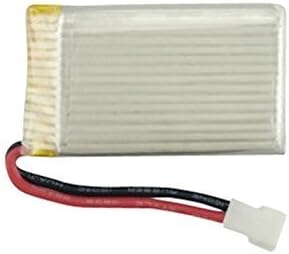This DIY talking plant solution measures the level of moisture in the oil and sends you a message through Alexa reminding you to water it when the soil is dry
This repo accompanies the "Talking Plant" YouTube video. it contains the code, library, diagrams, and more information that I promised in the videos.
Click on the image to watch the step by step video guide.
- ESP32 Board
- HC-SR501 PIR Sensor Infrared IR
- Capacitive Soil Moisture Sensor
- 5 LiPo Batteries And Charger
- Solder Kit
- Silicone Soldering Pad
- Helping Hands for soldering
- Breadboard - Jumper Wires - Male to Male Jumper Wires + Tweezer
- Hardware / Storage Cabinet Drawer
Moisture is the presence of water, often in trace amounts. Small amounts of water may be found, for example, in the air (humidity), in foods, and in some commercial products. Moisture also refers to the amount of water vapor present in the air.
Inserted into the soil around the plants. This sensor can check whether your plant is thirsty by measuring the level of moisture in the soil. In contrast to the normal resistive sensor, this capacitive soil moisture sensor has no adjustable switching contact. It changes with the humidity. Thus displays the exact humidity values in real time.
The HC-SR501 PIR motion sensor is a $2 sensor that is used to detect movement from humans or pets.
How PIR Motion Sensor Works
All objects with a temperature above Absolute Zero emit heat energy in the form of infrared radiation, including human bodies. The hotter an object is, the more radiation it emits. For most of our Arduino projects that need to detect when a person has left or entered the area, or has approached, HC-SR501 PIR sensors are a great choice. They are low power and low cost, pretty rugged, have a wide lens range, easy to interface with and are insanely popular among hobbyists.
HC-SR501 PIR sensor has three output pins VCC, Output and Ground as shown in the diagram below. It has a built-in voltage regulator so it can be powered by any DC voltage from 4.5 to 12 volts, typically 5V is used. Other than this, there are a couple options you have with your PIR. Let’s check them out.
There are two potentiometers on the board to adjust a couple of parameters:
Sensitivity– This sets the maximum distance that motion can be detected. It ranges from 3 meters to approximately 7 meters. The topology of your room can affect the actual range you achieve.
Time– This sets how long that the output will remain HIGH after detection. At minimum it is 3 seconds, at maximum it is 300 seconds or 5 minutes.
A Lithium Polymer battery, or more correctly Lithium-ion Polymer battery (abbreviated as LiPo, LIP, Li-poly, lithium-poly and others), is a rechargeable battery of lithium-ion technology using a polymer electrolyte instead of a liquid electrolyte. High conductivity semisolid (gel) polymers form this electrolyte. These batteries provide higher specific energy than other lithium battery types and are used in applications where weight is a critical feature, such as mobile devices, radio-controlled aircraft and some electric vehicles.
I had purchased this set of 5 batteries with a charger from Amazon for under $15 and been using them for a previous project without a problem, so that shall be my go to battery for this project as well.
No one likes wires hanging around, and so I went ahead looking for a 3D case I can use for this project and luckily found this one on Thingiverse so that's what I'll be using
Alexa media player: https://github.com/custom-components/alexa_media_player
Wire the HC-SR501 and the Soil sensor to the ESP32 development board as shown in the following schematic diagram.
Make sure you have installed an MQTT broker in your HomeAssistant setup beforehand. You can start here: https://www.home-assistant.io/docs/mqtt/broker#run-your-own
All contribution to this project is appreciated







